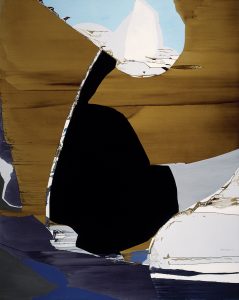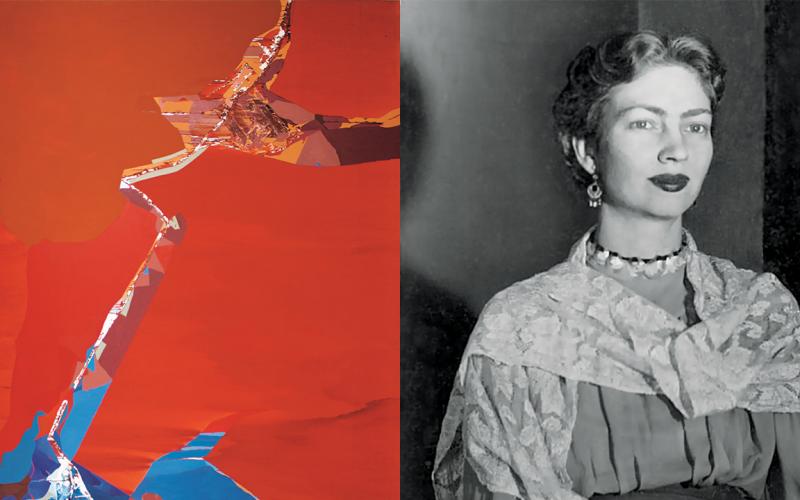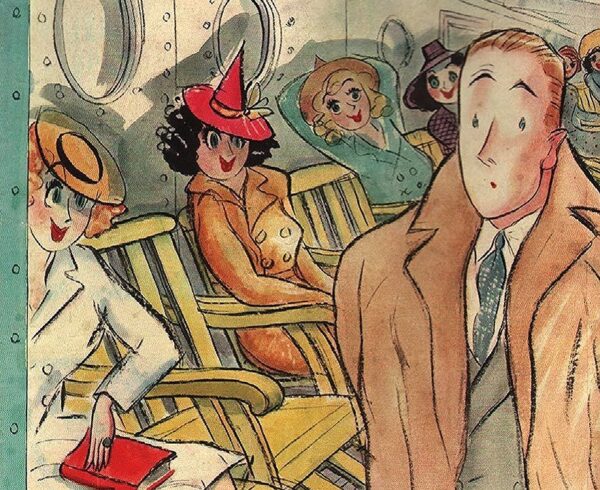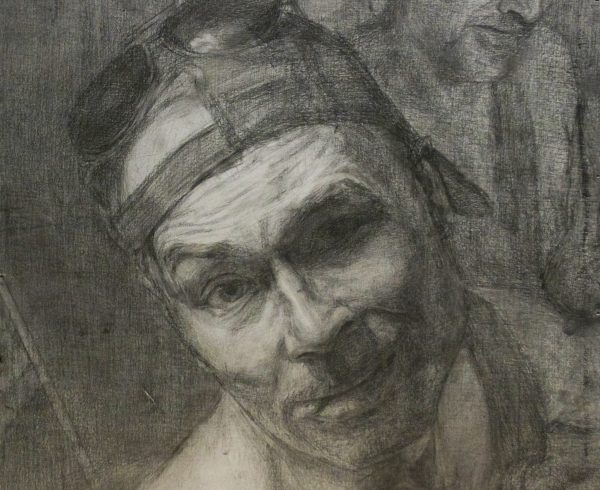Katy Vine introduces us to Dorothy Hood in her article in Texas Monthly:
“Dorothy Hood had all the makings of an icon. One of Texas’s most talented artists, she was a stunning strawberry blonde with a fearless sense of adventure. In 1941, fresh out of art school, she drove her dad’s roadster to Mexico City and stayed there for most of the next 22 years, drawing and painting alongside Diego Rivera, Frida Kahlo, Roberto Montenegro, and Miguel Covarrubias. Pablo Neruda wrote a poem about her paintings. José Clemente Orozco befriended and encouraged her. The Bolivian director and composer José María Velasco Maidana fell hard for her and later married her. And after a brief stretch in New York City, she and Maidana moved to her native Houston, where she produced massive paintings of sweeping color that combined elements of Mexican surrealism and New York abstraction in a way that no one had seen before, winning her acclaim and promises from museums of major exhibits. She seemed on the verge of fame.”
“She certainly is one of the most important artists from that generation,” said art historian Robert Hobbs. “She represents not only Texas but great connections with Mexico and New York, because she was carrying on artist conversations in a number of different worlds. She’s not only regional, she’s also national and international.”
The long awaited exhibit, Dorothy Hood: The Color of Being/El Color del Ser, is scheduled to open next month at the Art Museum of South Texas. Later this fall, Texas A&M University Press will publish Susie Kalil’s ambitious monograph on Hood.
But as Vine describes in the Texas Monthly article, some aspects of the show are disturbing and raise important questions about museums and the way they present an artist’s work. Of course, anyone who has been aware of this project is disappointed the show will not be traveling to other venues as soon as it leaves the museum in Corpus. It’s hard to imagine there would not have been interest.
What raises more concern for me as an artist is why the museum felt the need to bring in all the gimmicks to help “sell” the work to the public. Abstraction ceased being a problem for the public a generation ago. Dorothy Hood’s paintings are so colorful and beautiful, they are easily liked. One of the main reasons we have museums is to teach visual literacy, to guide and encourage people to stop and see. Often this takes quiet contemplative looking. It appears that the addition of the interactive program, the “deconstructed Dorothy” painting, the three cameras and wall-projections, and especially the screen and virtual brushstrokes will distract from the experience of viewing the art. The instant digital images are actually misleading and give people the wrong idea about what is is like to work with the physicality of paint and canvas. Maybe I am missing something, but the justification for this is beyond me. It grieves me to think we might be teaching people to expect art museums to be like theme parks.
This all seems like a lost opportunity. What is your opinion about this? Click here to read more.

HAITI, 1969, OIL ON CANVAS, 120” X 96”; THE MUSEUM OF FINE ARTS, HOUSTON, GIFT OF MR. AND MRS. MEREDITH LONG; PHOTOGRAPH OF HAITI: THE MUSEUM OF FINE ARTS, HOUSTON













I think there is a typo: Art Museum of Southeast Texas? I hope to get to see the exhibit!
Thanks Jim. Fixed.